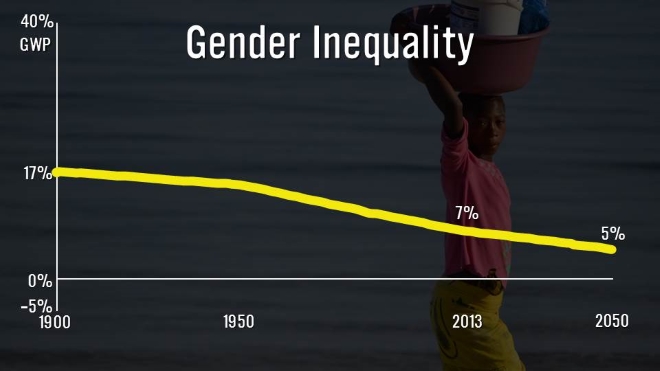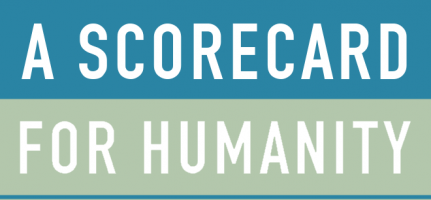A Scorecard for Humanity: Gender Inequality, Jacobsen
Assessment Paper
A version of the working paper is available for download here. The finalized paper has been published in How Much Have Global Problems Cost the World? A Scorecard from 1900 - 2050 by Cambridge University Press.
An Assessment Paper on gender inequality was written by Joyce P. Jacobsen and released as a chapter in How Much Have Global Problems Cost the World?

In 2012, women's lower salaries and exclusion from work cost the global economy a staggering 15.5% of GDP -- the difference between boom and bust. How did we get that figure?
The maximal estimate comes from looking at how much more women could have contributed to GDP, working as much as men and with the same pay. Deducted from this is the value of forgone (and unpaid) household work and the increased cost of female education.
In 1900, only 15% of the global workforce were women and even in 2012 it was still a less-than-even 40% earning only 60% as much as men. Even by 2050 the sex-ratio will not be even, and women will still make 30% less than men.
The research acknowledges that part of this may follow personal choices and not discrimination. In this medium estimate of gender inequality, the loss to the economy in 2010 is still estimated at 7%.
However, gender inequality is getting better, as the loss in 1900 was a substantial 17% of GDP. Projecting forward to 2050, that medium estimate suggests a 4% loss to the world economy.
Short summary
Gender inequality pervades the world. In considering the dimensions of economic gender inequality, women still make less than men in the formal work sector, are more likely to live in poverty, are less likely to participate in the formal work sector, and do a larger share of work in the household sector. The dimensions of political gender inequality include women's lower representation in elected office and lower representation in political and corporate appointments. Social gender inequality has numerous dimensions, some of which are less favorable to men while others are less favorable to women: men are more prone to violence, imprisonment, and disability, while women are more likely to be the victims of domestic violence and sexual assault; in some countries men have lower educational attainment than women, while the pattern is reversed in other countries. Demographic gender inequality includes the fact that men live shorter lives on average than do women (65 years for men, 69 years for women—CIA 2010), but there is also concern that many women are never given the chance to be born, and in the younger generations men now outnumber women, by large numbers in China and India in particular (with gender ratios respectively of 113 men and 117 men per hundred women in the under-15 age range—CIA 2010).
While many of the costs of gender inequality are ultimately born by particular individuals, they can also be calculated at a society, or even worldwide level. If individuals of different genders are not given equal opportunity to develop their potential, then societies forego the increased level of output and ultimately wellbeing that would derive from their higher productivity. If societies do not invest equally in educating and training men and women, do not give them equal opportunities to engage in more productive forms of work, and do not give them equal opportunities to advance to more productive positions over time, then the societies do not harness the full potential of their members.

